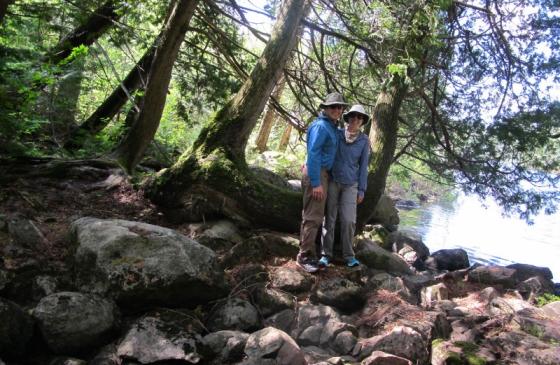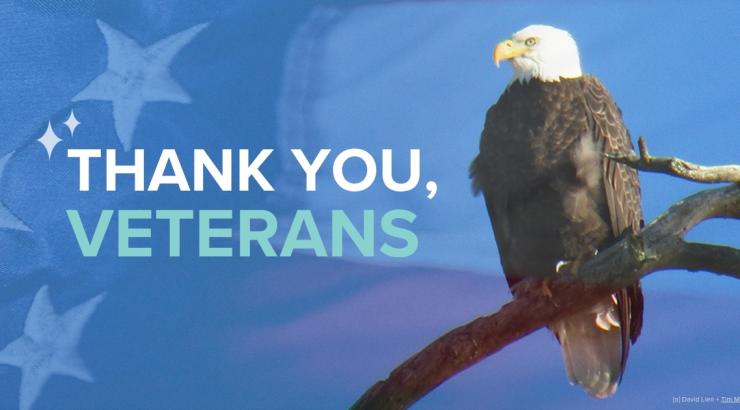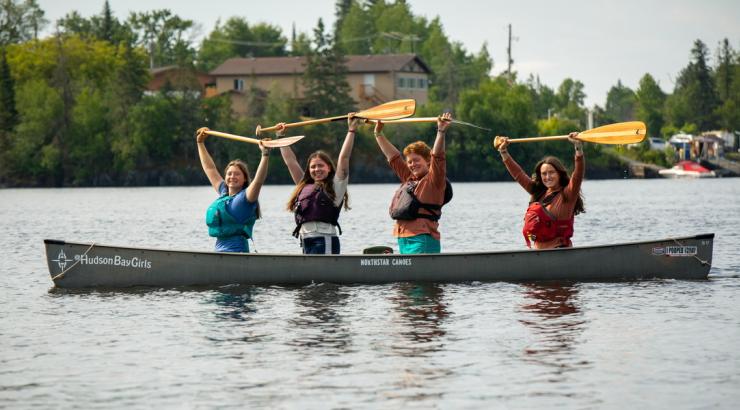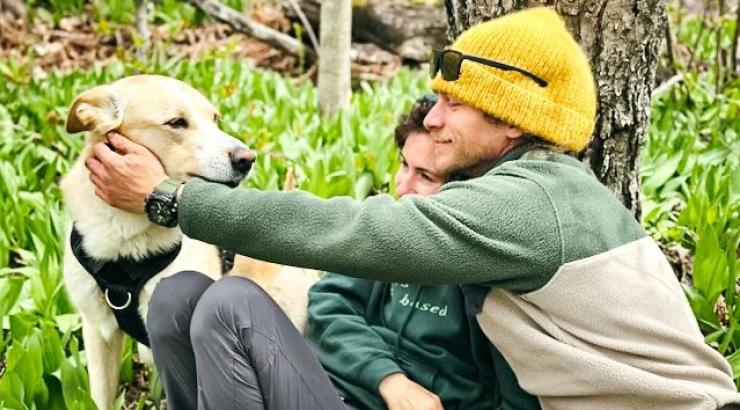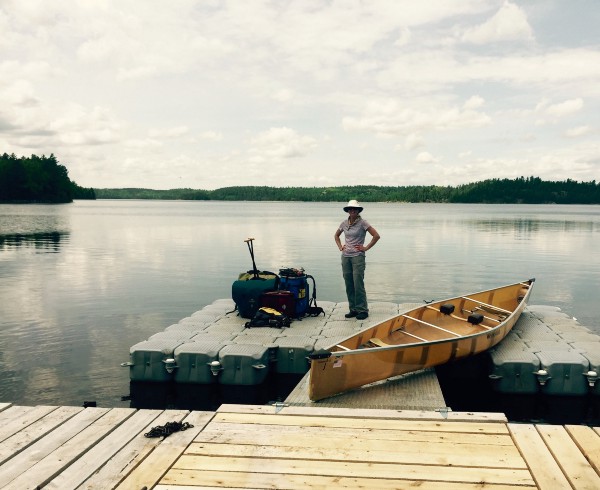
Trip Tales is a recurring blog series featuring stories from supporters about their adventures in the Wilderness. Submit your own to media@savetheboundarywaters.org.
Robyn and I celebrated our 16th wedding anniversary on a boat. Not an island-hopping yacht or luxury cruise liner, but an 18-and-a-half-foot canoe. A performance touring Minnesota II loaded with 60 pounds of gear, a fishing rod, and a bear-proof barrel with enough food for our 100-mile, seven-day adventure through the wilderness country known as Quetico Provincial Park in southern Ontario, Canada.
It was a good plan. We prepped, meal-planned, and made appropriate arrangements with Canadian officials and our outfitter pals at Piragis Northwoods Company in Ely, Minnesota.
What could possibly go wrong?
A good trip starts with a great outfitter.
Back in early March, a tube of six maps arrived at the house. Spreading them out on the dining room table, we stitched together a route that would carry us over 30 lakes, four rivers, a handful of beaver marshes and 14 miles of portages from Beaverhouse Lake in Quetico’s northwest corner to Moose Lake on the U.S. border. Our outfitter, Drew Brocket (if you’re planning a trip up here, he’s your man) described the route as a giant 7. “You’ll cross some big water, that’ll open up into some of the best paddling in the area,” Drew said. “It’s a little more rugged than what you’re used to with Boundary Waters, but it’s really extraordinary country up there.”
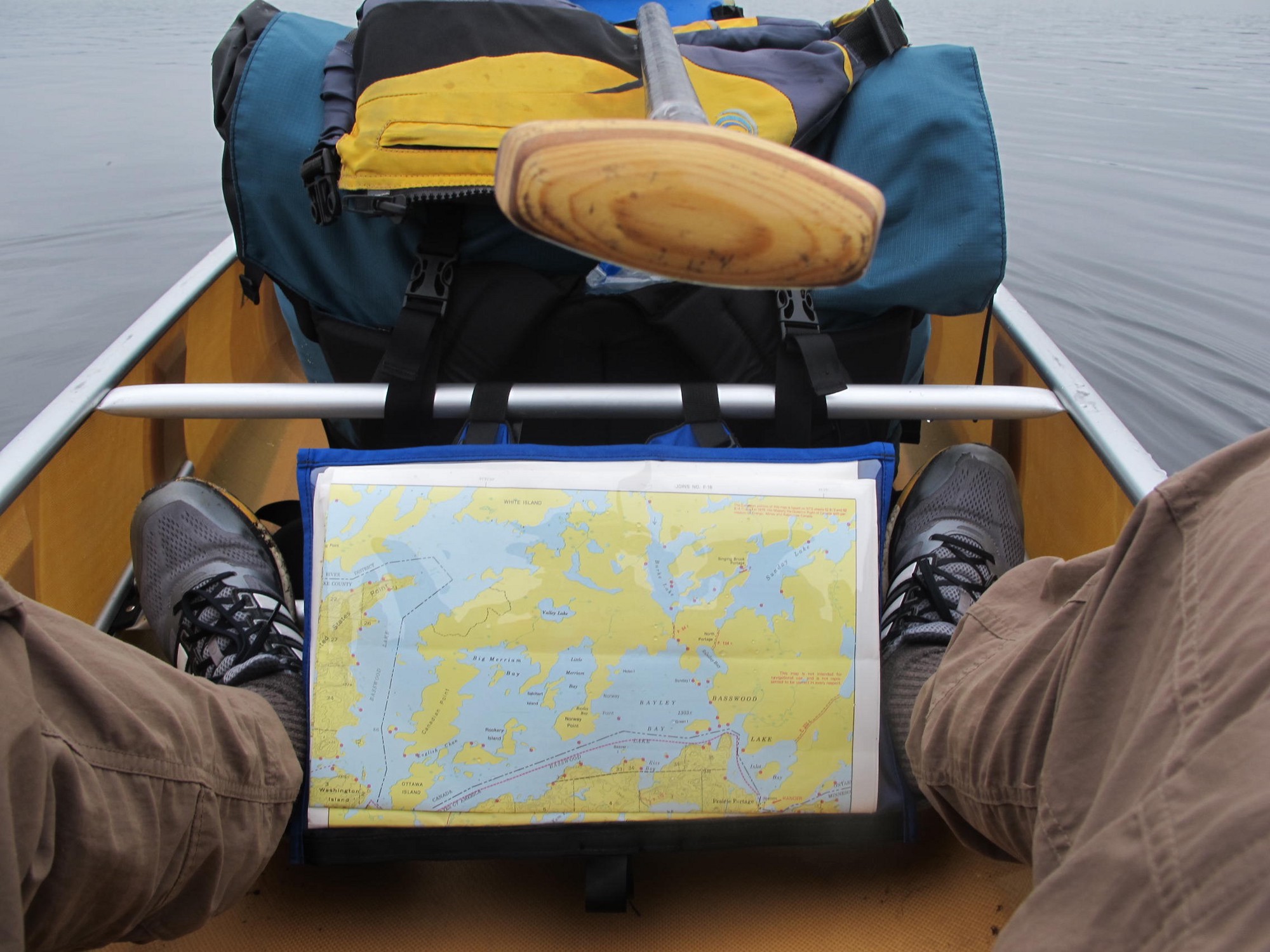
Drew explained that Quetico sees a tenth of the traffic as its sister park in the U.S., so we could expect some gnarly portages, especially this early in the season. “But that’s part of the fun, right? Oh, and one more thing worth noting,” Drew added. “Quetico is under a Restricted Fire Ban right now, so you’ll need to make sure you bring a stove with you for cooking.” A restricted what? “Does your stove burn jet fuel? The pilots won’t let you carry any flammable liquids on the plane.” Drew explained that we’d need to bring in a couple empty fuel canisters that the pilot would fill from his plane once we landed on Beaverhouse.
Note to selves: buy new camp stove that burns jet fuel siphoned off a 1948 de Havilland Beaver plane by a friendly bush pilot. Check.
Ducks fly together.
There is no “I” in canoe. The key to a successful voyage, and a marriage for that matter, is teamwork, communication, and a dash of blind trust thrown in for good measure. Up here, both paddlers can count on getting wet, slogging through knee-deep mud, scrambling over slippery boulders and dealing with tricky put-ins and take-outs. You’re likely to hear things like:
WHAT DO YOU MEAN YOU DON’T KNOW HOW TO GET A FISHING LURE OUT OF YOUR FINGER?!?!
HOW CAN BOTH THE COMPASS AND THE MAP BE WRONG?!?!?
HEY LOOK, A BEAR!
WHITE CAPS ARE PRETTY.
I DIDN’T KNOW A STORM FRONT COULD BLOW IN FROM THE NORTH, SOUTH, EAST AND WEST AT THE SAME TIME. COOL.
To panic is to fail. Ducks fly together.
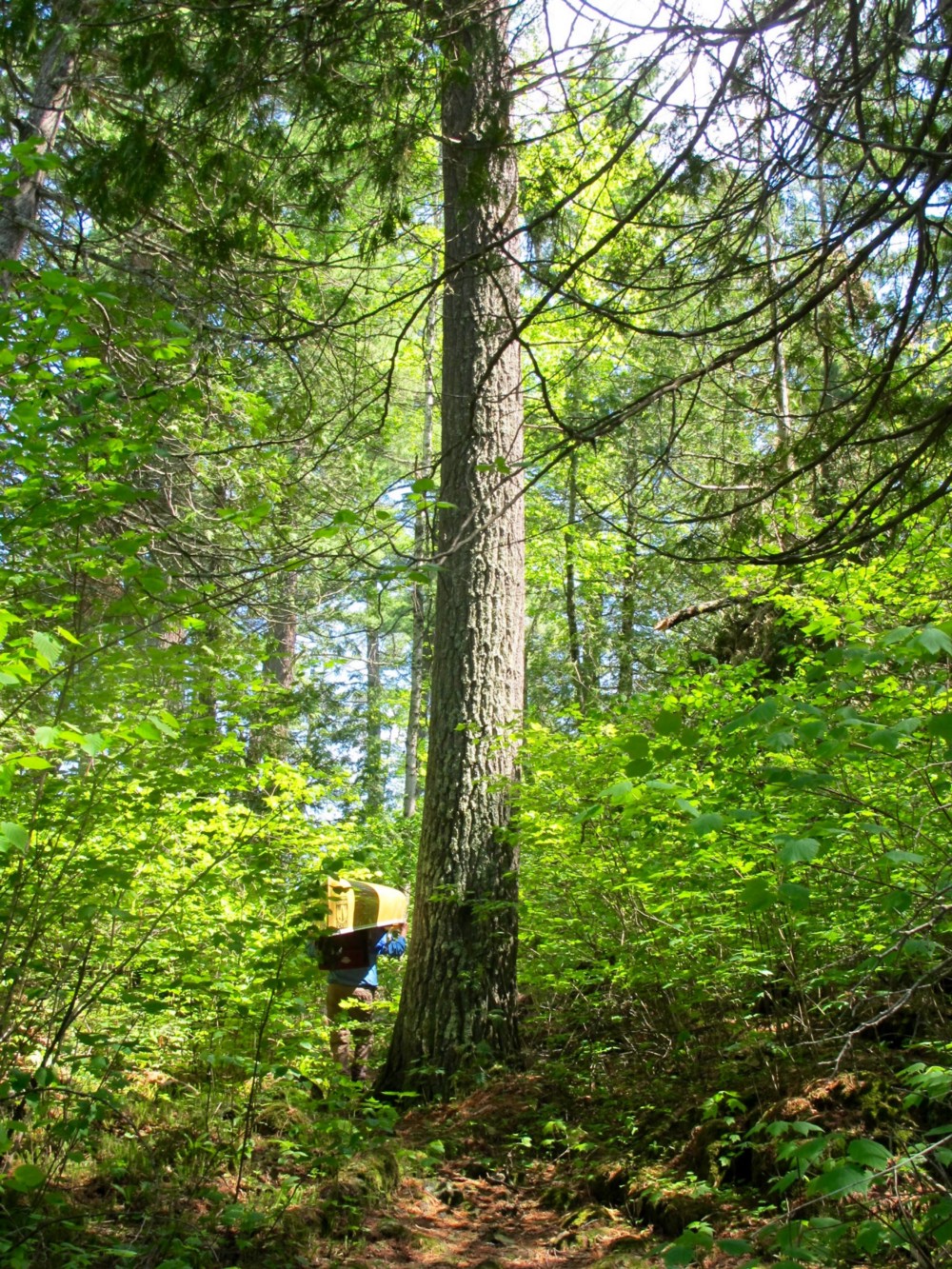 Case in point: having missed the portage at the end of Kahshahpiwi Creek, Robyn and I had to slash our way a quarter mile along a creekbed fighting the trees and river rock the whole way. We dug in and worked together to maneuver the canoe up and over rocks and fallen trees, hopping from mossy boulder to mossy boulder taking care to retrace our steps as we double backed for the rest of the gear. What we thought would be a quick 15-minute carry-over turned into a 90-minute battle with nature. It’s all part of the deal when you’re traveling through the Northwoods.
Case in point: having missed the portage at the end of Kahshahpiwi Creek, Robyn and I had to slash our way a quarter mile along a creekbed fighting the trees and river rock the whole way. We dug in and worked together to maneuver the canoe up and over rocks and fallen trees, hopping from mossy boulder to mossy boulder taking care to retrace our steps as we double backed for the rest of the gear. What we thought would be a quick 15-minute carry-over turned into a 90-minute battle with nature. It’s all part of the deal when you’re traveling through the Northwoods.
We get it, Earth. You’re a bad ass.
While traveling can be a bit more rugged as Drew described, navigating Quetico is really quite simple. With good maps, guidebooks and a compass, you can move effortlessly between the wilderness lakes, rivers and beaver marshes. Battling white-capped lakes, setting up two-sided rain tarps, drying a tent in a downpour and removing a treble hook from your index finger, however, requires an altogether different set of skills and temperament.
The key to your happiness is an ability to quickly reset, and adjust your expectations, which it turns out, is a skillset neither Robyn nor I possess. At some point, you just have to laugh and embrace the elements and take every moment for what it is.
By Tuesday evening, we were both laughing. Hysterically.
The winds subside, and the sun finally comes out on Keefer Lake.
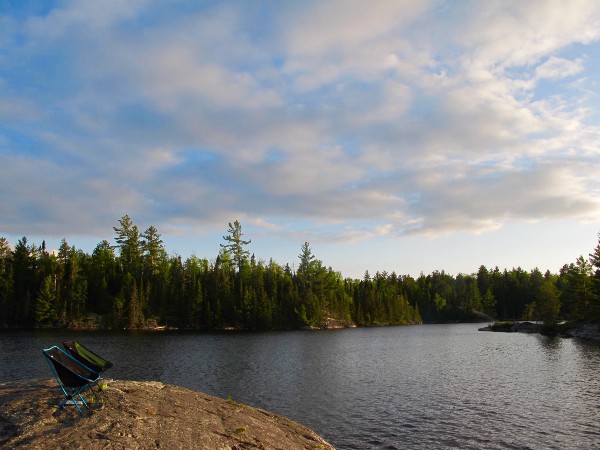 For the fortunate ones who are blessed with good weather and angling chops, you can live like kings up here. In late-May-early-June, the waters are chock-full of lake trout and walleye just waiting to become a sunset dinner.
For the fortunate ones who are blessed with good weather and angling chops, you can live like kings up here. In late-May-early-June, the waters are chock-full of lake trout and walleye just waiting to become a sunset dinner.
Not blessed with such skills* or weather, Robyn and I had to settle on dehydrated meals we enjoyed in our make-shift tarp-lined dining room with the pitter patter of rain for our evening soundtrack as we recalled the day’s adventures and reset our travel plans for the next big push in the morning. With the continued gusty winds, we traded in a direct route of big lakes for a series of smaller ones. It was a good strategy that paid off.
(*) To be fair, crappy weather, rain, wind and high daily mileage kept us from ever casting a line into the water. That said, I’m not much of an angler, though I can fillet a fish like nobody’s business.
We make it to our fly-out rendezvous point with an hour to spare.
Due to low visibility and unstable weather conditions at the beginning of the week, we had to flip our trip and paddle into the park on Saturday and make our way to the northwest corner of Quetico by 2 p.m. the following Friday to meet our float plane, which, weather-permitting, would safely bring us back to Ely, Minnesota. The other option was a 5-hour van ride back to the U.S. On Friday, June 5, we rounded the aspen-studded penninsula that guarded the Canadian Ranger Station, hoping against all hope to see a plane rather than a van awaiting us. Being an hour ahead of schedule, we saw neither.
After a quick lunch, we heard the chopsaw buzz of a 1948 de Havilland Beaver plane. It’s such a loud beast of a machine that it took almost a full minute until we finally spotted it low in the sky in its final approach onto the wide basin of Beaverhouse Lake.
Praise, Jesus.
After tying up to the dock, the pilot quickly loaded up our gear and strapped our 18-and-a-half-foot canoe to the plane (he had to ask Robyn to read the fine print on the boat to determine its length since he didn’t have his reading glasses with him — gulp).
And like that, we were ready for our first-ever water take-off. 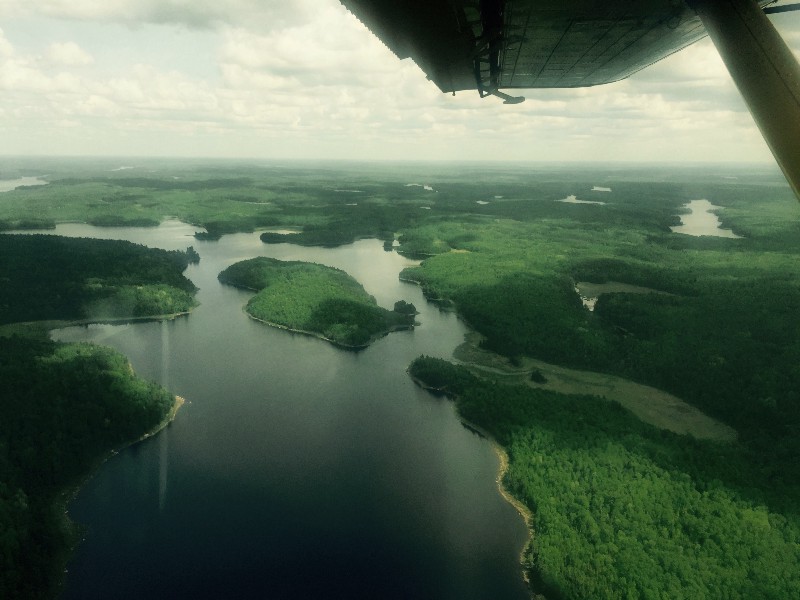
Once we were settled (Robyn saddled up in the front seat), our pilot concluded his short safety briefing with one final instruction: should anything happen to him during the flight, we were directed to push a little red button on the dash, presumably so the Canadian authorities could retrieve our carcasses and gear. My stomach turned cartwheels as my imagination raced.
With that simple, terrifying declaration, he put on his radio headset — which he’d retro-fitted with a yellow kitchen sponge that was duct-taped to the headband for added comfort — and fired up the engine (singular, as in, oneengine). Within minutes, we were sailing across Beaverhouse towards the eastern shoreline.
Giving us a thumbs up, he pushed the throttle bar into the windshield. The cockpit filled with a deafening roar as the plane’s floats gently slipped out of the water and we gradually climbed up and up and up, over the wilderness lakes and trees. As far as we could see there wasn’t a house or road in sight. Nothing but the raw beauty of Quetico.
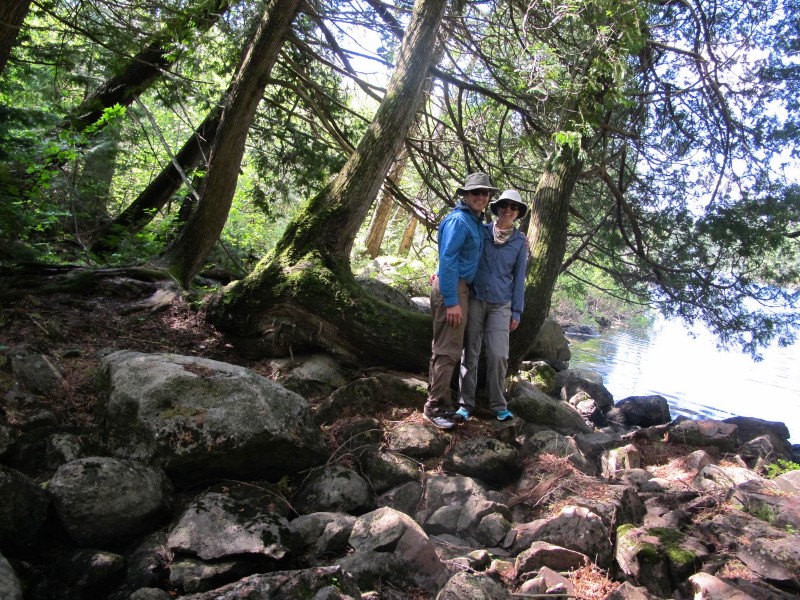
Cruising home, we weren’t thinking so much about Sir G’s large pizza and cold beer or the hot water, toilet seats, and comfortable pillowtop mattress that awaited us in Cabin #8 at our favorite Northwoods retreat, the Burntside Lodge, but rather the lucky few who were still cruising from lake to lake to lake below us. No matter how hard it can be at times, this trip gets under your skin like a splinter. It’s funny how quickly your thoughts can turn from utter relief to sentimental sappiness with just the right nudge in perspective.
Good question.
Referring to Sigurd Olsen’s 1938 article “Why Wilderness?," David Backes writes:
Sigurd maintains that there is a “fierce satisfaction that only comes with hardship.” Fighting the waves, slogging through a mucky portage with a heavy pack and canoe, setting up camp after a bone-wearying day, and then sleeping on the ground may not always be fun, but nevertheless are for many people a stress-releasing break from a comfortable yet vaguely unsatisfying urban life. The exercise in itself helps release stress, but in addition is the sense of perspective that comes from spending days or weeks at a time in which the major decisions have to do with such basic physical necessities as food and shelter. Echoing Bob Marshall and Bertrand Russell, Sigurd also argues that sharing the physical difficulties and the simple pleasures of a wilderness trip with others can bring about a camaraderie that otherwise is most often found in the midst of war.
A hyperbolic leap, perhaps, but Backes and Olsen were certainly on to something, here. The wilderness can be an unpredictable, unforgiving place that requires you to surrender in new and unexpected ways.
In the end, you come to discover that the struggle is the joy of cruising.
Jason Roemer is a principal at Lodge Design in Indianapolis, Indiana. He and his wife have been exploring the Boundary Waters for more than 20 years and are inspired by Amy and Dave’s year-long adventure, and quest to save this unforgettable wilderness country.
